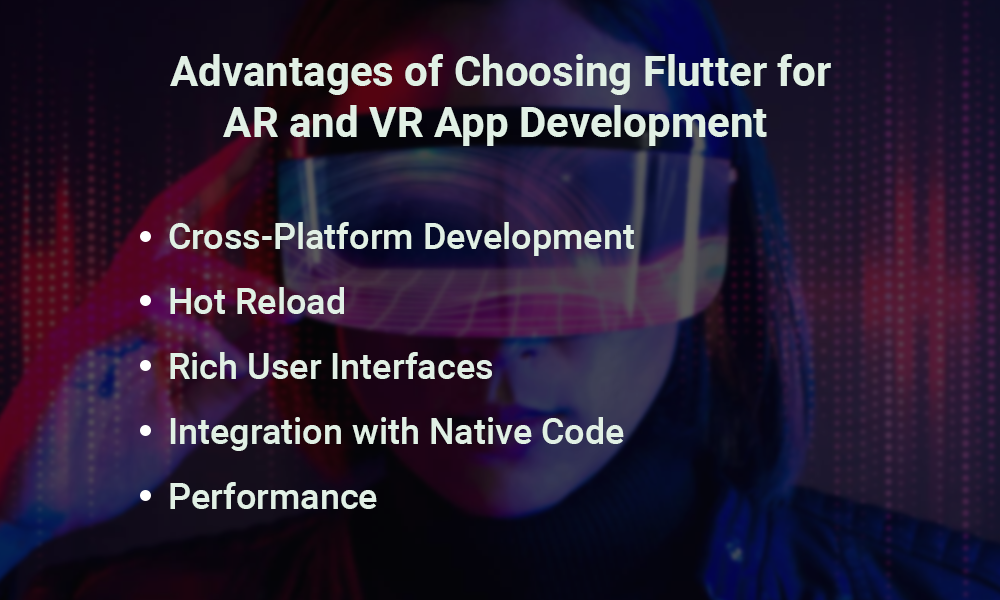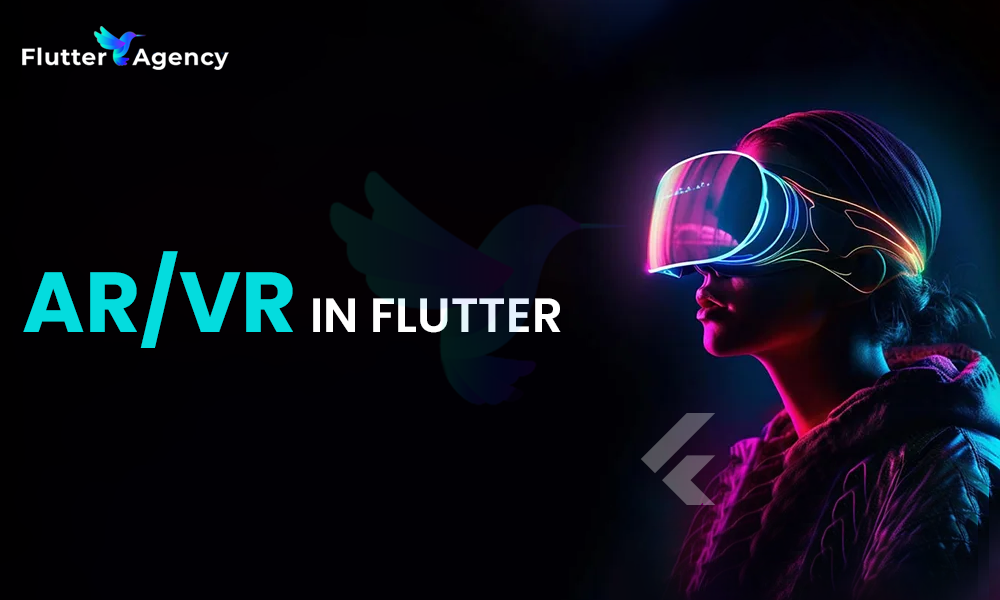Augmented Reality (AR) and Virtual Reality (VR) in Flutter: Beyond Gaming
In the modern time of cell phones and excellent computer innovations, augmented reality (AR) and virtual reality (VR) have become more demanding in current application development. As the interest for AR and VR applications develops, organizations should settle on phenomenal improvement practices and devices for fostering a versatile and future-proof app. One such robust and cross-platform framework is Flutter, which has gained significant momentum. So, if you want to hire Flutter expert team and are wondering what should be considered before developing an AR/VR app with Flutter, we mention the details below.
Why Choose Flutter for AR App Development?
Before you find out how to build AR and VR apps using Flutter, you should learn why you should choose Flutter for AR and VR app development:
Cross-platform Development:
The Flutter framework allows you to develop some excellent AR apps in Flutter. It is for both iOS and Android platforms. This cross-platform development drastically reduces the overall time and cost of app development.
Hot Reload:
Flutter has hot reload functionality. It facilitates quick and easy experimentation besides building UIs, adding unique features, and fixing app bugs.
Customizable and Extensible:
Flutter has a vast set of fully customizable widgets. This widget even allows you to incorporate some excellent technologies, such as ARKit and ARCore, to create some of the latest AR and VR apps using Flutter.
Performance:
Flutter framework easily deals with the codes for iOS and Android app development. This ensures a high performance of AR and VR applications built with Flutter.
Advantages of Choosing Flutter for AR and VR App Development

Flutter was primarily designed to build some cross-platform mobile applications. Though Flutter is not specifically tailored for augmented reality (AR) or virtual reality (VR) app development; however, you can easily use them with other frameworks. Here are some potential benefits of using Flutter for AR and VR app development:
Cross-Platform Development:
Flutter allows the developers to write code once and easily deploy the code on both iOS and Android platforms, which can be advantageous for maintaining a single codebase for AR and VR applications across different devices.
Hot Reload:
Flutter’s hot reload feature enables developers to make the necessary changes to the code easily and see the results in real time. This can be especially useful during the iterative development process of AR and VR apps, allowing for quick experimentation and adjustments.
Rich User Interfaces:
Flutter is known for its capability to create visually appealing and customizable user interfaces. This can benefit AR and VR applications where an engaging and immersive user interface is crucial for a positive user experience.
Integration with Native Code:
Flutter supports the integration of native code, which means you can leverage existing AR and VR libraries or SDKs written in languages like Java, Kotlin, Swift, or Objective-C and seamlessly incorporate them into your Flutter app.
Performance:
Flutter is designed to provide high-performance applications. While AR and VR applications often have specific performance requirements, Flutter’s focus on smooth animations and responsive interfaces can contribute to a positive user experience.
Customization:
Flutter allows for a high degree of customization, which can be crucial in AR and VR development, where tailoring the user interface and interaction elements to the application’s specific needs is important.
Top AR/VR Frameworks for the Development With Flutter
Below, we are mentioning several frameworks that are excellent for building AR/VR apps in Flutter. Here are the top choices for now:
Google’s AR technology. It has made the development process more accessible to developers through the ARCore Flutter Plugin. This plugin enables the complete integration of ARCore capabilities into the latest Flutter applications. It even provides complete support for the ARCore features such as plane detection, motion tracking, and light estimation.
ARKit is the Apple’s innovative AR development platform. It provides excellent tools and APIs to build excellent AR apps for iOS devices. It even offers excellent features such as motion tracking, plane detection, and light estimation. It even supports devices that are running on version iOS 11 and higher.
Steps for Building an AR/VR app in Flutter
Building an excellent Augmented Reality (AR) or Virtual Reality (VR) app in Flutter framework involves leveraging some specific packages and libraries to integrate AR/VR functionalities into your application. You can hire Flutter expert team for this. Below are the general steps you can follow to build an AR/VR app in Flutter
Read About AR Development in Flutter: A Step-by-Step Guide
Set Up Flutter:
Install Flutter in your system by following the instructions on the official Flutter website.
Set up an Integrated Development Environment like Visual Studio Code or Android Studio.
Create a New Flutter Project:
Use the following command to create a new Flutter project:
flutter create my_ar_vr_app
Add the Necessary Inputs:
Open the pubspec.yaml file in your project and add the necessary inputs. For AR, you might use packages like arcore_flutter_plugin for ARCore and ARKit support. For VR, consider packages like flutter_unity_widget for integrating Unity into Flutter.
Set Up AR/VR Views:
For AR, use the AR views provided by the chosen AR package. This typically involves setting up an ARView or similar widget.
For VR, integrate the VR views using the appropriate widgets or components provided by the selected VR package.
Implement AR/VR Features:
Utilize the functionalities provided by the AR/VR package to implement features such as placing virtual objects in the AR environment, tracking movements, or interacting with VR content.
Test Your App:
Test your AR/VR app on both emulators and real devices. Ensure that AR features work seamlessly in AR-supported devices.
Deploy:
Once testing is successful, deploy your AR/VR app to the desired platforms (iOS, Android).
As the Flutter framework continues to empower developers to create unique and innovative cross-platform applications efficiently, the complete integration of AR and VR opens up many possibilities beyond gaming. The diverse applications in different fields highlight the potential for AR and VR. This process has revolutionized the way people interact with digital content. By exploring these latest technologies in Flutter, hire Flutter expert team who can significantly contribute to the growing landscape of the modern app world.
Contemporary ventures
Recent blog
ready to get started?
Fill out the form below and we will be in touch soon!
"*" indicates required fields












